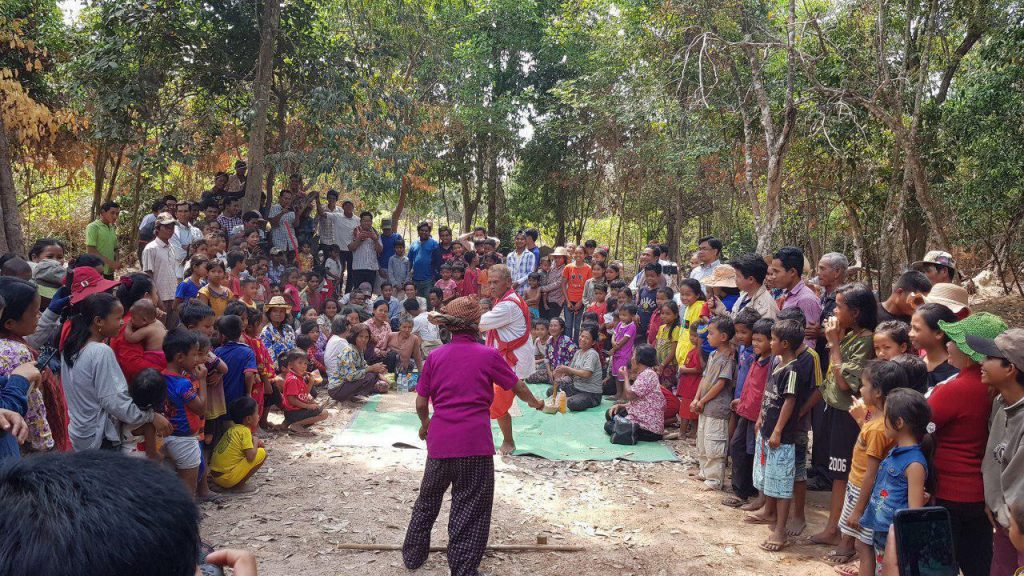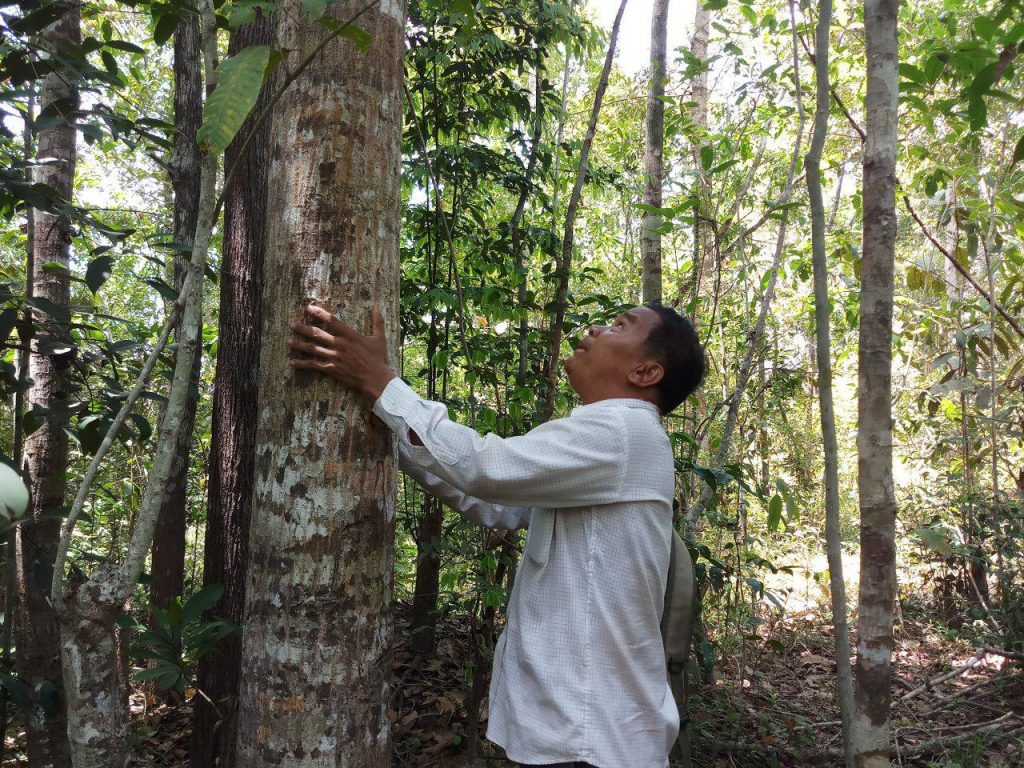Over half a billion people in developing countries are now dependent on community-managed forests (Baynes et al. 2015) and there is global recognition that continuous deforestation and forest degradation has become a serious threat to social, economic and environmental welfare (Nhem & Lee 2019). In developing countries, such as Cambodia, deforestation has many causes including illegal logging, forest land conversion for agricultural production, granting of too many ELCs, and land grabs (Nhem & Lee 2019; Beauchamp et al. 2018; MAFF 2010). Natural resource degradation causes and increases income inequality and unsustainable forest use and management are also associated with increasing rural poverty (Nhem et al. 2018a).

Forest loss has been partly ascribed to the failure of national institutions and this has led to the transfer of the rights to manage forests from the state to local people. There is global support for this participatory forestry management, or community-based forestry (CBF), to help address the drivers of deforestation. Since the 1970s, CBF initiatives have sought to combine sustainable forestry, community participation and poverty reduction (Millner et al. 2020). CBF has been described as a model in which local people have central roles in government managing and using forest resources. For example, Stanzel et al. (2017) indicated that CBF programs aim to improve the livelihood of local people as well as the condition of natural resources on which they depend for their living. CBF is intended to increase the power of local people in decision-making about the management of forest resources, including policy, institutional arrangements, and conservation. The expectation is that local involvement in decision-making concerning natural resources would lead to the development of a local sense of ownership and use of the resources in more protective and sustainable ways. However, even where local communities have authority to protect and use forest resource, studies have emphasized that external finance and technical support is still needed for forest patrols and, perhaps, to create forest services to benefit these communities (Nhem et al. 2018b).
Cambodia is committed to sustainably protect forests through reforming the forest sector (RGC 2011; Nhem et al. 2018). Cambodia participates internationally in addressing the impact of climate change and works to fulfill its international obligations under UNFCCC and 2030 Agenda for Sustainable Development. For example, through SDG15, the State Parties have agreed to protect, restore and promote sustainable use of the terrestrial ecosystem, sustainably manage forests, combat desertification, and halve and reverse land degradation and halve biodiversity loss (UN 2015; Nhem et al. 2018). To achieve this, countries must implement policies and national plans of action, build capacity and arrange their institutions accordingly. However, even if some of these governments seem to have the will to manage their forests, empirical studies have documented that degradation continues in practice as many developing countries have weak control over forestry and poor rural livelihood strategies (Nhem et al. 2018; Gilmour 2016; Manandhar & Shin 2013).

CBF in Cambodia was started in the 1990s by NGOs, with the support of government (Nhem et al. 2018b; Sunderlin 2006). Cambodia had established 499 CBF sites by 2015, covering 910 villages, and by July 2019, this had increased to 636 sites covering 437,255 ha. Some of the CBF sites and wildlife sanctuaries were locations for the pilot REDD+ projects. In the last two decades, Cambodia has enacted at least 15 high-level laws, policies and strategies related to forestry and conservation with aim of regulating forest production, supporting reforming, establishing community-managed forestry and suspending non-performing ELCs. For example, RGC enacted the Forest Law in 2000, setting the legal framework for community management of forest and defining that the production forest of the permanent forest estate is to be granted to local people to use and manage. Directive No.79 on Community Forestry Management was issued in 2003, marking the point where CBF moved from being a pilot approach to the national strategy for forest management. In 2010, RGC adopted the National Forest Program, a masterplan for forestry sustainability, which set out a community forestry program to ensure sustainable forest management and sustainable rural livelihoods. Progress on institutional governance reform has also been made recently. One example is Sub-decree No.69 on Transferring Protected Forests, Protected Forest Areas and ELCs, enacted in 2016. This helps to reduce the complexity of national and institutional arrangements by transferring some protected areas and production forest areas from MAFF to MoE.

In other aspects, however, Cambodia’s CBF is still in an early stage of development and has yet to demonstrate its full potential, despite the initiatives and policy commitment through the Community Forestry devolution program. For example, forest cover in Cambodia has decreased from 59.82% in 1993 to 58.60% in 1996, to 57.07% in 2010, to 49.48% in 2014 and just 48.14% in 2016 (Nhem & Lee 2019; MoE 2018). Similarly, Riggs et al. (2018) has set out that the forest area of Cambodia declined at a rate of 1.2% annually between 1990 and 2015. This review supports CBF as a powerful vehicle for moving towards sustainable forest management while bringing significant improvements to local livelihoods. The assumption underlying the transfer of management rights to communities and stakeholders through CBF will lead to sustainable forest management and improvements in key environmental, social and economic outcomes at the local level. I conclude that deforestation has become an issue of public interest and sensitivity in Cambodia. CBF and the accompanying local institutional community arrangements are increasingly recognized internationally as successful mechanisms to achieve sustainable forest management. I note that there has still been no significant exploration of the viewpoint of local people to determine the monitoring and actions needed to enable CBF to achieve sustainable forest management. Given that many CBF regimes are still performing below expectations, this is an important area for further investigation.

Contributed by Nhem Sareth, 2016 AFoCO Landmark Scholar from Cambodia
Dr. Nhem Sareth is a recipient of the 2016 AFoCO Landmark Scholarship and the first Ph.D. scholar to graduate from the Scholarship Program. He returned to Cambodia after graduating from Kongju National University in 2019 and currently works as a freelance consultant and researcher while lecturing regularly at the Graduate School of National University of Management (NUM) and the Techo Sen Graduate School of Government and International Relations, University of Cambodia (UC).
References
- Baynes, J., Herbohn, J., Smith, C., Fisher, R., & Bray, D. (2015). Key factors which influence the success of community forestry in developing countries. Global Environmental Change, 35, 226–238.
- Beauchamp, E., Woodhouse, E., Clements, T., & Milner-Gulland, E. J. (2018). “Living a good life”: Conceptualizations of well-being in a conservation context in Cambodia. Ecology and Society, 23(2).
- Gilmour, D. (2016). Forty years of community-based forestry. Rome, Italy: Food and Agriculture Organization of the United Nations (FAO).
- MAFF. (2010). National Forest Programme 2010-2029. Phnom Penh, Cambodia: Ministry of Agriculture, Forestry and Fisheries (MAFF).
- Manandhar, T. D., & Shin, M. Y. (2013). How community-based forest management can improve rural livelihoods: A case of Kabhre district, Nepal. Forest Science and Technology, 9(3), 131–136.
- Millner, N., Peñagaricano, I., Fernandez, M., & Snook, L. K. (2020). The politics of participation : Negotiating relationships through community forestry in the Maya Biosphere Reserve, Guatemala. World Development, 127, 104743.
- MoE. (2018). Cambodia Forest Cover 2016. Phnom Penh, Cambodia: Ministry of Environment (MoE).
- Nhem, S., Lee, Y. J., & Phin, S. (2018a). Forest income and inequality in Kampong Thom province, Cambodia: Gini decomposition analysis. Forest Science and Technology, 14(4), 1–12.
- Nhem, S., Lee, Y. J., & Phin, S. (2018b). Policy implications for community-managed forestry in Cambodia from experts ’ assessments and case studies of community forestry practice. Journal of Mountain Science, 15(11), 2531–2551.
- Nhem, S., & Lee, Y. J. (2019). Using Q methodology to investigate the views of local experts on the sustainability of community-based forestry in Oddar Meanchey province, Cambodia. Forest Policy and Economics, 106(April), 101961.
- RGC. (2011). Achieving Cambodia’s Millenium Development Goals: Update 2011. Phnom Penh, Cambodia: Royal Government of Cambodia (RGC).
- Riggs, R. A., Langston, J. D., & Sayer, J. (2018). Incorporating governance into forest transition frameworks to understand and influence Cambodia’ s forest landscapes. Forest Policy and Economics, 96(March), 19–27.
- Stanzel, J., Krott, M., & Schusser, C. (2017). Power alliances for biodiversity — Results of an international study on community forestry. Land Use Policy, (September), 102963.
- Sunderlin, W. D. (2006). Poverty alleviation through community forestry in Cambodia, Laos, and Vietnam: An assessment of the potential. Forest Policy and Economics, 8(4), 386–396.
- UN. (2015). Adoption of the Paris Agreement. Retrieved from http://unfccc.int/resource/docs/2015/cop21/eng/l09r01.pdf
*The information presented in this article does not represent the views of the Asian Forest Cooperation Organization (AFoCO).

